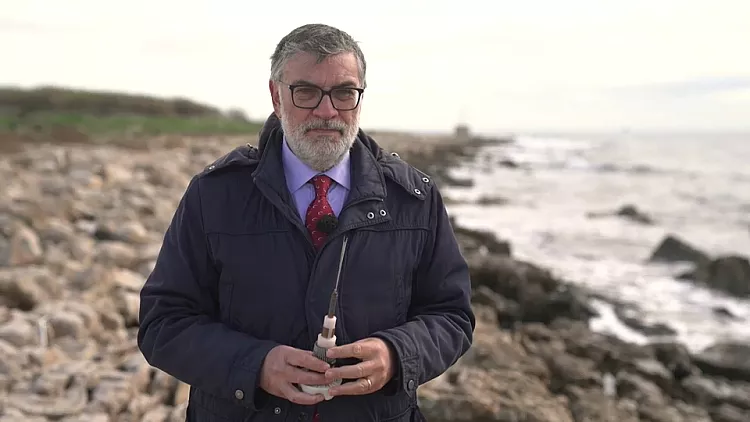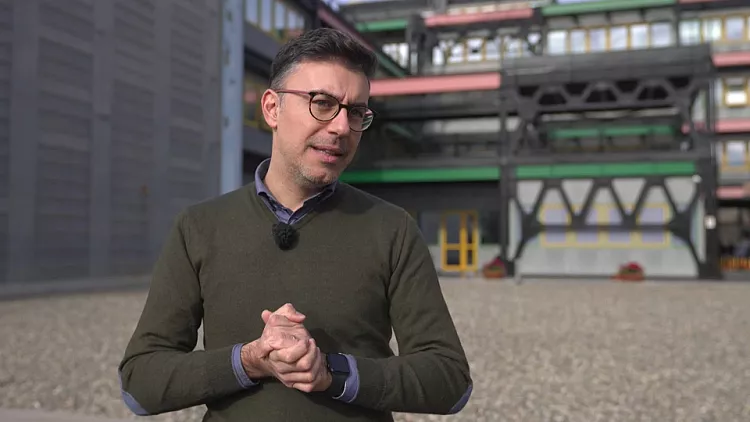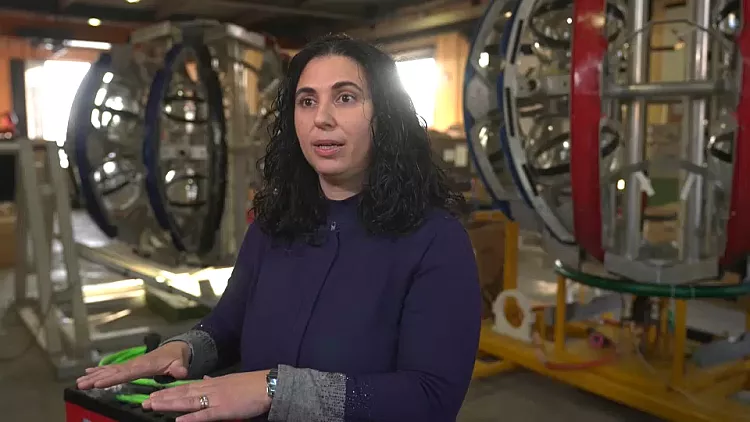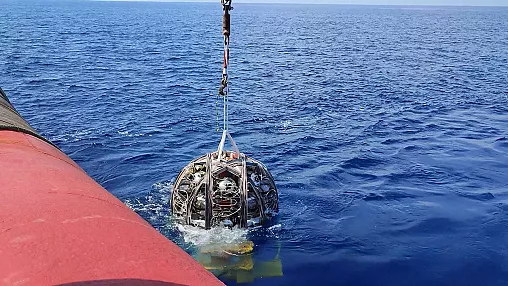In this installment of Smart Regions, we delve into Sicily’s underwater laboratory, exploring how Europe’s largest underwater telescope, IDMAR, holds the potential to enhance our understanding of the universe’s origins.
Situated off the coast of Portopalo di Capo Passero, at the southern tip of Sicily, IDMAR features spherical underwater nodes actively observing and listening to events in the Mediterranean. These nodes relay crucial real-time information to researchers.
Giacomo Cuttone, IDMAR’s Scientific Coordinator, elucidates, “IDMAR is positioned 100 kilometres east from here, beneath the surface at a depth of 3500 metres. Through this connection, it furnishes us with insights into geophysics, volcanology, biology, and, most importantly, offers a glimpse into the composition of the universe.”

Giacomo Cuttone, Scientific Coordinator, IDMAREuronews
Situated at the base of Mount Etna in the city of Catania, the Italian Institute of Nuclear Physics spearheads this European initiative. Simone Biagi is part of the diverse research team operating within this subaqueous laboratory, positioned at a depth of 3.5 km, precisely at the juncture of the European and African plates. Through IDMAR, they capture photographic and cartographic data of this seismic region.
Beyond seismic studies, researchers are engaged in unraveling a more profound cosmic inquiry by examining elusive elementary particles known as neutrinos, voyaging through air, sea, and space.
Simone Biagi, contributing to Smart Regions, notes, “Neutrinos can undoubtedly offer a significant answer to comprehending the origin of cosmic rays. Cosmic rays, originating from particles bombarding Earth, remain a mystery. By detecting neutrinos arriving from the universe, we gain insight into our cosmic origins.”
IDMAR encompasses 28 lines, each comprising 18 spheres housing myriad sensors, forming a sophisticated network for scientific exploration.

Simone Biagi, Researcher, INFN-LNSEuronews
How is IDMAR financially supported? The overall budget amounts to €40 million, with €19 million sourced from the EU cohesion policy and €1 million contributed by the region of Sicily.
The collaborative efforts in this initiative involve key partners such as the National Institute of Nuclear Physics, the National Laboratories of the South in Catania (executed in collaboration with the National Institute of Geophysics and Volcanology in Palermo and Messina), and the Institute for the Study of Anthropic Impacts and Sustainability in the Marine Environment in Trapani’s Capo Granitola.
Illuminating the mysteries of underwater marine life At the INFN-LNS String Integration laboratory in the port of Catania, Giuseppina Larosa oversees the maintenance of the IDMAR hydrophones.
Each sphere is equipped with a hydrophone—an underwater apparatus capable of detecting and recording oceanic sounds emanating from all directions.

Giuseppina Larosa, Acoustic Physics Researcher, INFN-LNSEuronews

Each sphere is fitted with a hydrophone, an underwater device that detects and records ocean sounds from all directions.Euronews
So, what findings have emerged from the exploration of the ocean’s depths through the analysis of its sounds?
“With IDMAR, our initial belief was that there were no longer whales present in the Mediterranean, except for sperm whales,” disclosed Giuseppina Larosa.
“However, our discoveries revealed that they were still present, albeit at deeper depths. Through the utilization of sound, we have gained insights into their locations and movements.”

